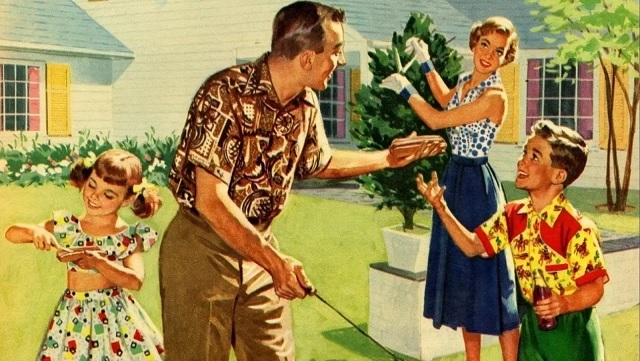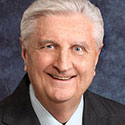‘The Lost City: The Forgotten Virtues of Community in America’
By MercatorNet – Navigating Modern Complexities

An unspoken social contract used to link community to the existence of strong authority.
As a long-time former editor of Governing magazine, Alan Ehrenhalt is an expert on local political and governance issues in America. More than a quarter of a century ago, he wrote a little-known classic which is essential reading for all those interested in community.
“The Lost City: The Forgotten Virtues of Community in America“ focuses on the city where Ehrenhalt grew up, Chicago, and the era which many Americans of various backgrounds look back on with fondness – the 1950s.
In the years following the release of “The Lost City,” the extraordinary strength of civic life in mid-20th century America was brought to a far larger audience by Professor Robert Putnam.
Here, Ehrenhalt takes the reader on a tour of Chicago (and by extension, America) by focusing on the lives of the parishioners in St Nicholas of Tolentine parish, the people in the African-American urban ghetto of Bronzeville and those living in the new and prosperous suburb of Elmhurst.
Ehrenhalt’s analysis also demonstrates the greater social harmony enjoyed by those labouring under the various constraints of the unspoken social contract which linked community to the existence of strong authority.
Across all three communities, a strong religious pervaded, but particularly in St Nick’s parish, as it was affectionately known.
Here, we get a sense of what urban Catholicism in America was really like. Chicago, Ehrenhalt writes, was the largest American archdiocese, containing more than two million practising Catholics, along with 400 parishes (a number that was then growing by six parishes on average each year) and 300,000 parochial school students.
Here as elsewhere, Irish priests presided over a diverse range of European ethnicities. Not only did the church draw together the great bulk of parishioners each Sunday, it was also the centre for most of the social activity.
For the men, the Holy Name Society reigned supreme, with activities ranging from bowling leagues and golf outings to Eucharistic Adoration and attendance at packed monthly talks.
For women – here as elsewhere the more religiously committed of the sexes – there was the Altar and Rosary Society, whose members cleaned the church, prepared food for parish meetings and promoted Marian devotions within every family home.
In this setting, the source of the authority was clear. The saintly Monsignor Fennessy strode through the parish in his cassock, imparting wisdom in his Irish brogue, while at the same time, his intimidating and authoritarian curate Father Lynch – who had served as a Marine chaplain on the bloodiest beaches during the Pacific campaign – handled the day-to-day running of such a large parish.
Aside from the religious conformism within a pre-Vatican II parish, Ehrenhalt details the various ways in which those living inside the parish’s boundaries had fewer choices than their modern counterparts: including when it came to the jobs they did or the stores they shopped in.
Some were far less fortunate. Black Chicagoans had far less say over where they could live, let alone what they could do with their lives.
In this community known as Bronzeville, institutions such as black churches, black businesses and social institutions (such as the Chicago Defender newspaper) and the Democratic Party machine were of paramount importance.
The exodus to suburbia was one of the most consequential social processes in the 20th century, and Ehrenhalt’s third profile is of one such community to the west of the city, where many World War II veterans flocked to raise their families in peace and prosperity.
In Elmhurst, civic society had to be created almost from scratch, and the spirit of this epoch allowed for this: indeed, it necessitated it.
“The new suburbanites were not fleeing community, or even the particular communities they were leaving behind… But they believed, with the faith of the 1950s, that community was something they could simply recreate in the place they were moving to. And they did everything they could to recreate it, with an energy that sometimes bordered on compulsiveness,” the author writes.
Throughout the book, Ehrenhalt is at pains to avoid engaging in a nostalgia-driven argument, and he freely acknowledges that the near-universal popularity of social clubs, functions and organisations carried with it disadvantages for those who would have preferred a more detached or independent life.
There were also real limits to the meaningfulness of much of this togetherness. One burst of enthusiasm in Elmhurst led to the creation of a new Presbyterian church which quickly developed into a large congregation.
This new suburban religiosity, though, had clear parallels with the rise of popular preachers who Ehrenhalt suggests “seemed to offer religion as something comfortable and almost effortless, a pleasant reassurance against personal doubt and insecurity.”
Ehrenhalt cannot be fairly accused of looking at the past through rose-tinted glasses, and he also makes clear that the restoration of a greater sense of community (which most people today likely aspire to) can hardly come about with the restoration of social authority (which most people today would likely recoil from).
“Authority and community have in fact unravelled together, but few mourn the passing of authority,” he reflects.
Disciplinarian teachers, stern parents and harsh clerics who preached an uncompromising Gospel were never popular, but they played an important role in preserving an orderly way of life.
Indeed, Ehrenhalt notes the way in which the common perception of widespread social repression prior to the social revolution of the 60s (including in popular history and literature) often comes directly from the pen of those who were disgruntled with their minority status within a broadly contented social milieu.
“Much of the image of American Catholic life in those years comes from the work of former Catholics who considered the church they grew up in not only authoritarian but destructive of their free choices and creative instincts,” Ehrenhalt explains, before adding that “[i]f you visit a working-class Catholic parish in a big city, and ask the older parishioners what they think of the church in the days before Vatican II, they don’t tell you that it was tyrannical or that it destroyed their individuality. They tell you they wish they could have it back.”
Ehrenhalt vivid description of Chicago’s neighbourhoods in the heyday of civic engagement and the subsequent decline ties in neatly with the work of other authors who have focused on community, and in particular the ground-breaking work of Robert Nisbet.
As with the central argument of “The Lost City,” Nisbet’s criteria for defining community made clear that some form of authority had to exist – which he observed came about through habit or custom.
Even more striking (and to some, off-putting) than Ehrenhalt’s emphasis on moral authority is the stress which he places on sin: the common belief that it truly existed, and that it had to be resisted.
Towards the end of “The Lost City,” Ehrenhalt revisits the three communities to show how much had changed. Gone are the lines outside the confessionals of the much more sparsely attended St Nick’s and gone are the cassocks which the priests once wore.
In Elmhurst, the close-knit and geographically based ties which were established so quickly had fallen apart to be replaced by much looser connections, with one of the key driving forces being the rise of two-job families where neither parent had the time needed “at home for the gestures of community that bound the original residents together.”
And while the residents of what was Bronzeville now had immeasurably more freedom in a racially integrated city, many of the more affluent black citizens had exercised that freedom to leave to find new homes in areas less plagued by social dysfunction and crime.
Ehrenhalt’s analysis is profound and has relevance far beyond Chicago. A similar decline to what occurred in St Nick’s parish can be witnessed in more extreme form in a country like Ireland, where the moral authority of the Catholic priesthood had been even more elevated, and where its fall from grace has been even more precipitous.
The author’s wise reflections on the false and ahistorical narrative which has been created about the recent past certainly deserves the attention of those aspiring to set right the historical record in time.
There is little hope of a sudden return to community, but Ehrenhalt notes the various examples in recent history (such as Victorian Britain) where ordered liberty was restored after a period of social disorder.
“For that to happen anytime soon,” he concludes, “the generations that launched the rebellion will have to force itself to rethink some of the unexamined ‘truths’ with which it has lived its entire adult life. It will have to recognise that privacy, individuality, and choice are not free goods, and that the society that places no restrictions on them pays a high price for that decision.”
Everything that has occurred since the publication of this book in 1996 suggests that those who have led the liberal charge towards ever greater permissiveness will not pause to consider what has been lost, as well as what has been gained.
Those who recognise the value of a communitarian bargain that places limits on our behaviour can still learn from Ehrenhalt and take heart from the prospect that what was torn down could yet again be recreated.
AUTHOR
James Bradshaw writes on topics including history, culture, film and literature. More by James Bradshaw
EDITORS NOTE: This MercatorNet column is republished with permission. ©All rights reserved.

This article is courtesy of DrRichSwier.com, an online community of citizen journalists, academics, subject matter experts, and activists to express the principles of limited government and personal liberty to the public, to policy makers, and to political activists. Please visit DrRichSwier.com for more great content.

